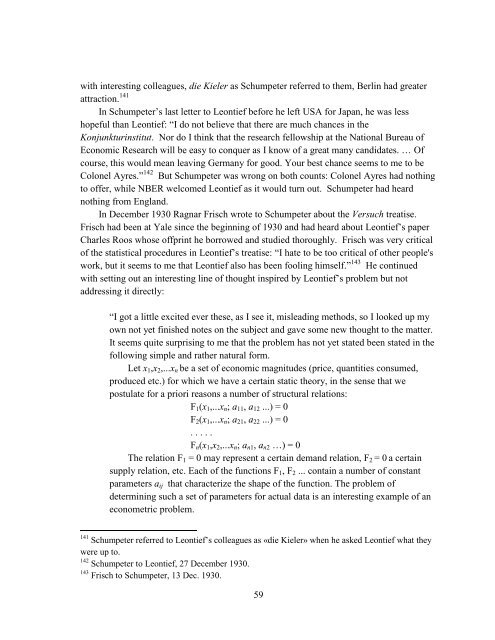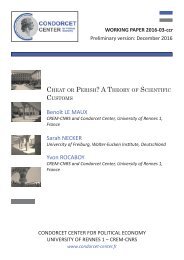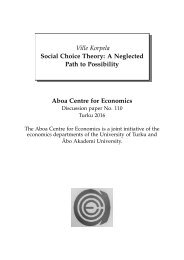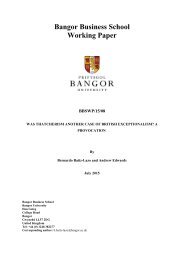MEMORANDUM
n?u=RePEc:hhs:osloec:2016_018&r=hpe
n?u=RePEc:hhs:osloec:2016_018&r=hpe
You also want an ePaper? Increase the reach of your titles
YUMPU automatically turns print PDFs into web optimized ePapers that Google loves.
with interesting colleagues, die Kieler as Schumpeter referred to them, Berlin had greater<br />
attraction. 141<br />
In Schumpeter’s last letter to Leontief before he left USA for Japan, he was less<br />
hopeful than Leontief: “I do not believe that there are much chances in the<br />
Konjunkturinstitut. Nor do I think that the research fellowship at the National Bureau of<br />
Economic Research will be easy to conquer as I know of a great many candidates. … Of<br />
course, this would mean leaving Germany for good. Your best chance seems to me to be<br />
Colonel Ayres.” 142 But Schumpeter was wrong on both counts: Colonel Ayres had nothing<br />
to offer, while NBER welcomed Leontief as it would turn out. Schumpeter had heard<br />
nothing from England.<br />
In December 1930 Ragnar Frisch wrote to Schumpeter about the Versuch treatise.<br />
Frisch had been at Yale since the beginning of 1930 and had heard about Leontief’s paper<br />
Charles Roos whose offprint he borrowed and studied thoroughly. Frisch was very critical<br />
of the statistical procedures in Leontief’s treatise: “I hate to be too critical of other people's<br />
work, but it seems to me that Leontief also has been fooling himself.” 143 He continued<br />
with setting out an interesting line of thought inspired by Leontief’s problem but not<br />
addressing it directly:<br />
“I got a little excited ever these, as I see it, misleading methods, so I looked up my<br />
own not yet finished notes on the subject and gave some new thought to the matter.<br />
It seems quite surprising to me that the problem has not yet stated been stated in the<br />
following simple and rather natural form.<br />
Let x 1 ,x 2 ,...x n be a set of economic magnitudes (price, quantities consumed,<br />
produced etc.) for which we have a certain static theory, in the sense that we<br />
postulate for a priori reasons a number of structural relations:<br />
F 1 (x 1 ,...x n ; a 11 , a 12 ...) = 0<br />
F 2 (x 1 ,...x n ; a 21 , a 22 ...) = 0<br />
. . . . .<br />
F n (x 1 ,x 2 ,...x n ; a n1 , a n2 …) = 0<br />
The relation F 1 = 0 may represent a certain demand relation, F 2 = 0 a certain<br />
supply relation, etc. Each of the functions F 1 , F 2 ... contain a number of constant<br />
parameters a ij that characterize the shape of the function. The problem of<br />
determining such a set of parameters for actual data is an interesting example of an<br />
econometric problem.<br />
141 Schumpeter referred to Leontief’s colleagues as «die Kieler» when he asked Leontief what they<br />
were up to.<br />
142 Schumpeter to Leontief, 27 December 1930.<br />
143 Frisch to Schumpeter, 13 Dec. 1930.<br />
59





